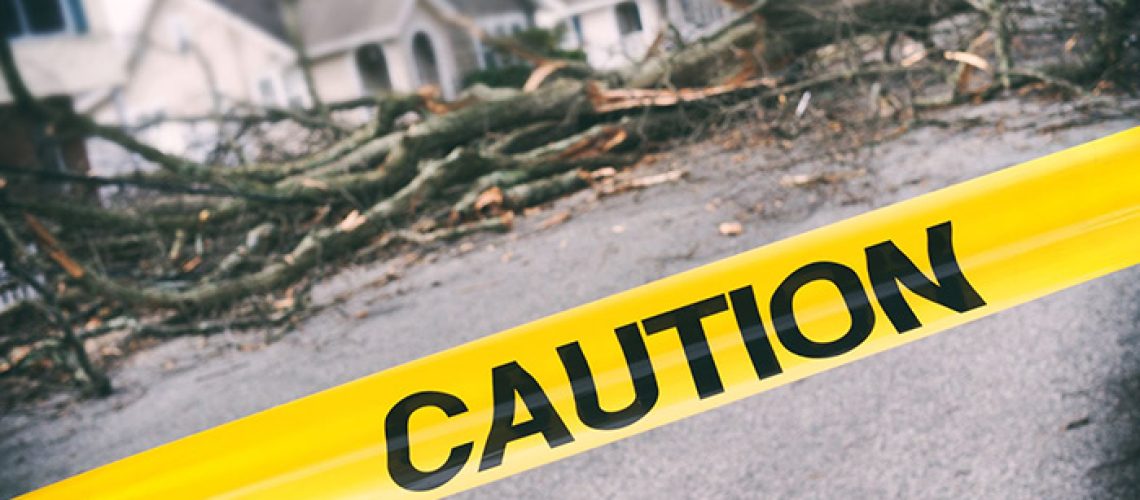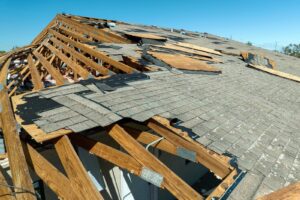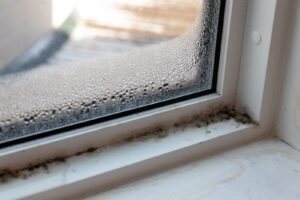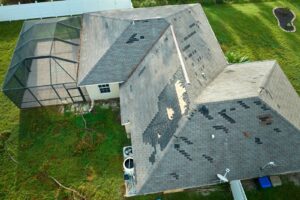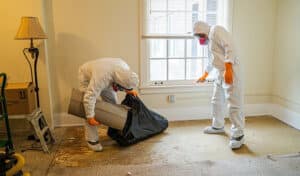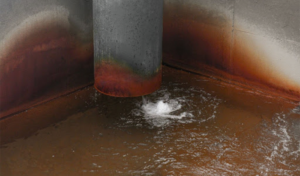When the clouds part and the storm calms, storm damage clean up is a critical step to reclaiming your home. Understanding the right moves to make in the immediate aftermath is usually the difference between a quick recovery and long-term headaches. This blog dives deep into the essential cleanup tips you need to prevent mold growth and water damage after a storm.
With these strategies, you’ll restore order to your home and fortify it against future tempests. Let’s embark on this crucial journey of storm damage clean up together, ensuring your home remains a safe haven no matter what the weather throws its way.
Ensure your safety
The first step in storm damage clean-up is to ensure your safety. Before entering your home, check for any visible structural damage or hazards. If you notice any cracks in the walls, sagging ceilings, or exposed electrical wires, it’s crucial to contact a professional to assess the situation.
We don’t recommend trying to fix these issues yourself, as doing so may cause further damage or injury.
Switch off electricity
Water and electricity don’t mix well and pose serious risks to your safety. Locate your home’s main electrical panel and turn off the power to prevent electrocution or potential short circuits. If you are unsure about how to do this, consult an electrician or your local power provider for guidance.
Dry out the affected area
After a storm, it is crucial to remove any standing water as soon as possible. Use buckets, mops, or a wet/dry vacuum to carefully remove the excess water. Ensure that you have appropriate adult supervision and protection while doing this task. Do not forget to also carefully dry out furniture, carpets, and other items that might have been affected.
Open windows and doors
Once you have removed the standing water, it’s essential to increase ventilation in the affected area. Open windows and doors to let fresh air circulate through the space. This will help reduce moisture levels, speeding up the drying process.
However, be mindful of ongoing heavy rains or high humidity levels outside, which can hinder the drying process. If you notice any moisture buildup or extensive water damage, it’s best to consult with professionals.
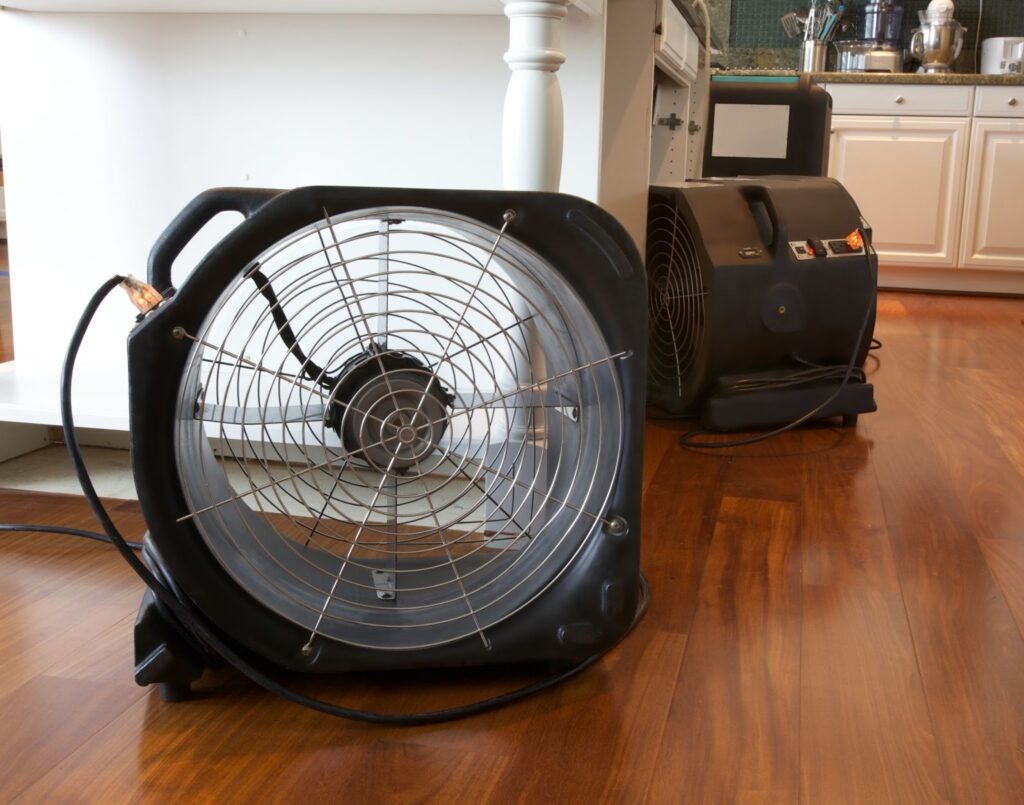
Use fans or dehumidifiers
To expedite the drying process, consider using fans or dehumidifiers. Place fans strategically around the area to promote air circulation and help evaporate any remaining moisture. If you have access to a dehumidifier, turn it on to extract excess humidity from the air. This is particularly useful in enclosed spaces or basements where air circulation might be limited.
Use towels and rags
After removing excess water, take towels or rags and carefully blot and wipe any wet surfaces. This will help absorb moisture and prevent it from seeping into walls, floors, or attics. Be thorough in this process, paying attention to corners and hidden spots where water might have accumulated.
Watch out for hidden moisture
Even after you’ve completed the initial drying process, it’s essential to stay vigilant for hidden moisture. Mold can develop within 24 to 48 hours, so be sure to thoroughly inspect all areas and surfaces for signs of dampness.
Pay attention to walls, ceilings, and behind furniture or appliances. Remember, preventing mold growth is crucial to avoiding further damage and potential health issues. Mold damage is the last thing you’ll want to deal with.
Cleaning and disinfecting
Before you commence your cleanup mission, be sure to put on protective gear. Gloves, goggles, and even a mask will shield you from potential contaminants or harmful substances you may come into contact with.
Now, let’s tackle the initial steps of cleaning.
Debris
Start by removing any debris, fallen branches, or leaves that may have accumulated in and around your home during the storm. Use a rake or a broom to gather all the clutter and dispose of it properly. This will help prevent any further damage and create a clear path for your cleaning endeavors.
Waterlogged areas
Next, it’s time to address the waterlogged areas of your home. Use towels or a mop to soak up any excess water. Remember, the sooner you remove the water, the lower the risk of mold damage. Pay special attention to places like basements, crawl spaces, and attics where dampness tends to linger. If possible, use fans or dehumidifiers to further aid the drying process.
Disinfecting
After addressing the water issue, it’s vital to disinfect your home thoroughly. This step helps eliminate any lingering bacteria or germs that may have entered your home during the storm. Prepare a bleach solution by mixing one cup of bleach with one gallon of water.
Wearing your gloves, apply this solution to hard surfaces such as walls, countertops, and floors that have been affected by water. Scrub gently and rinse with clean water afterward.
While disinfecting, remember your furniture and belongings. Use a cleaner suitable for the material of your furniture to cleanse and sanitize these items. Take extra care with items that cannot be easily replaced, such as family heirlooms or sentimental objects. When in doubt, seek professional help to ensure their safe restoration.
Salvaging belongings
When sorting through your belongings, make two piles: salvageable and non-salvageable. Salvageable items are not severely damaged; you can restore them with thorough cleaning and drying. Non-salvageable items are beyond repair or pose health risks due to contamination.
Treating salvageable items
For salvageable items, it’s crucial to clean and dry them as soon as possible to prevent further damage or mold growth. Here’s how you can tackle different types of belongings:
- Clothing and fabrics: Launder clothes and textiles with hot water and detergent. If mold stains persist, consult a professional cleaner. Hang clothes outside or use fans to dry them thoroughly.
- Furniture and upholstery: Wipe down furniture and upholstery with a solution of water and mild detergent. Allow them to air dry completely. If mold growth is extensive, consider seeking help from professional restoration services.
- Books and paper documents: Carefully separate damp pages and place absorbent materials, like paper towels or unprinted newsprint, between them. Change the absorbent material regularly until the items are completely dry. Avoid using heat sources or direct sunlight, as they can cause further damage.
- Electronics: Do not turn on electronics that have been exposed to water. Wipe them gently with a dry cloth and place them in a warm, dry area. Contact a professional technician for inspection and repair.
- Photos and artwork: Handle moist photos and artwork with care to prevent further damage. Place them between wax paper or plastic sheets and lay them flat to air dry. Seek professional help for restoring valuable or irreplaceable pieces.
Prevent mold and water damage with Restoremasters
Don’t let storm damage clean up and water and mold damage become overwhelming burdens. Restoremasters is your go-to ally in navigating the aftermath of any storm, providing expert cleanup and restoration services to bring your home back to its best.
With a keen focus on swiftly and effectively addressing storm and mold damage, we ensure peace of mind and a safe, healthy environment for you and your loved ones. Reach out to Restoremasters today for all your storm damage clean up needs and take the first step towards a fully restored home.

